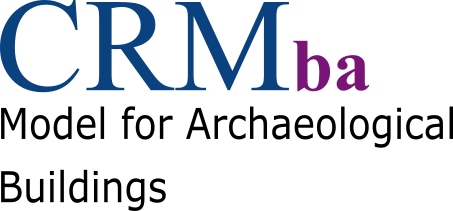|
What is the CRMba? The CRMba is an ontology and RDF Schema to encode metadata about the documentation of archaeological buildings (Ronzino 2015, Ronzino et al. 2015). The model was conceived to support the process of recording the evidences and the discontinuities of matter on archaeological buildings, in order to identify the evolution of the structure throughout the centuries and to record the relationships between each of the building components among them and with the building as a whole. It aims at expressing the semantic relations of the stratigraphic units of a standing building, taking into account the stratigraphic analysis theory of the standing buildings (Brogiolo 1988, Parenti 2002, Schuller 2002, Morriss 2004). The model is built on the same principles of the CIDOC CRM. The model reuses, when appropriate, parts of the CIDOC CRM classes and properties, and refers to other CRM extensions that were developed to ensure the completeness of documentation. In particular, the CRMba model incorporates parts of the CRMgeo, a detailed model of generic spatio-temporal topology and geometric description (Doerr & Hiebel 2013); parts of CRMsci, a model for scientific observation, measurements and processed data in descriptive and empirical sciences (such as biology, geology, geography, cultural heritage conservation, etc.) and CRMarchaeo, a model developed for the documentation of archaeological excavations. The CRMba is a proposal for approval by CIDOC CRM SIG |
What is the idea? The goal of the CRMba conceptual model is to provide support to:
|


